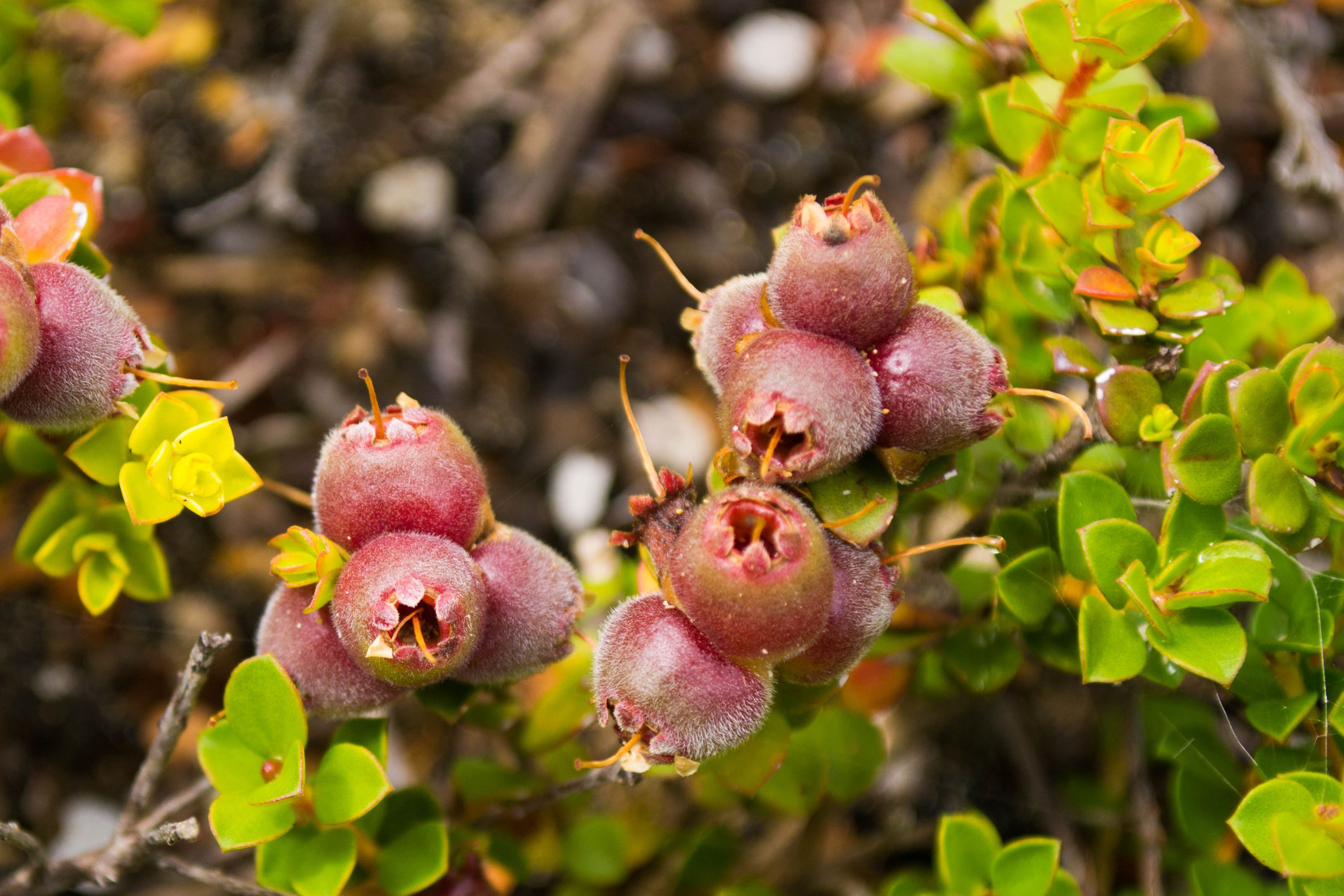Native cranberries
(Kunzea pomifera)

Description
Kunzea pomifera, commonly known as muntries, emu apples, native cranberries, munthari, muntaberry or monterry,is a low-growing or prostrate shrub with hairy stems, small, mostly egg-shaped leaves, groups of white flowers on the ends of the branches and fleshy, more or less spherical, edible fruit. Kunzea pomifera is a low-growing or prostrate shrub with hairy young stems and that often develops roots along its main branches. Its leaves are arranged alternately and are egg-shaped to elliptic or almost round with a downturned point on the end. The leaves are 3–8 mm (0.1–0.3 in) long, 3–6 mm (0.1–0.2 in) wide on a petiole 0.5–1.5 mm (0.02–0.06 in) long. The flowers are white to cream-coloured, arranged in groups of mainly between three and eight near the ends of the main branches. There are oblong to more or less round bracts covered with silky hairs at the base of the flowers and almost reaching the top of the floral cup. The sepals are brown, triangular and 1.5–2 mm (0.06–0.08 in) long. The petals are egg-shaped to almost round, 1–2 mm (0.04–0.08 in) long. The stamens are white and 4–7 mm (0.2–0.3 in) long and the style is 5–9 mm (0.2–0.4 in) long. The fruit is fleshy, more or less spherical, 8–12 mm (0.3–0.5 in) in diameter, deep red to purple or black when mature. Kunzea pomifera was first formally described in 1855 by Ferdinand von Mueller from specimens collected "on the sandy shores and on rocks at St. Vincent's Gulf and Rivoli Bay. The description was published in Mueller's book, Definitions of rare or hitherto undescribed Australian plants. The specific epithet (pomifera) is derived from the Latin words pomum meaning "fruit of any kind" or "apple": 97 and fero meaning "to cover or bear". Muntries grows in Victoria and South Australia. In Victoria it grows mainly in sandy soil in the Little Desert and Big Desert and small populations between Portland and Nelson. In South Australia it grows in sandy soil, often with limestone, between the Yorke Peninsula and the Victorian border. The berries produced by these plants are about 1 centimetre (0.39 in) in diameter, green with a tinge of red at maturity and have a flavour of a spicy apple. Crunchy in texture, muntries contain up to four times more antioxidants than blueberries and provide natural waxes that are good for skin nourishment.
Taxonomic tree:







